Lorem ipsum
So lovely to welcome Ailsa, Georgie and India from @mowden_hall to Robertson House 🦋🩵last night. Enjoy your @SedberghSchool taster experience! pic.twitter.com/5FqWOYtFXL
— Robertson House (@Robertson_Sed) October 7, 2024

Lorem ipsum
So lovely to welcome Ailsa, Georgie and India from @mowden_hall to Robertson House 🦋🩵last night. Enjoy your @SedberghSchool taster experience! pic.twitter.com/5FqWOYtFXL
— Robertson House (@Robertson_Sed) October 7, 2024
This is his RVW’s first completed symphony and one of the earliest major choral symphonies in English music. Setting poetry from Walt Whitman’s Leaves of Grass, it explores the sea as both a literal and spiritual metaphor for exploration and human destiny. Premiered at the Leeds Festival, it signaled Vaughan Williams’s move toward a distinctly English symphonic voice, blending expansive orchestration with modal harmonies and visionary choral writing. The work’s significance lies in its ambition: it established him as a leading British composer and opened a new path for English symphonic and choral expression.
This content is accessible to paid subscribers. To view it please enter your password below or send mike@standardsmichigan.com a request for subscription details.
“ I think that the theater is the initial glamorizer of thought; where it can be told – without too much disguise but without too much directness either – the secrets, and thereby its antipathies and sympathies – the secrets and the knowledge of the human heart…
…I think that makes the art of the theater as important as the doctor or the psychologist or the Minister…
…I think it’s vitally important that the world knows itself and I think the theater is one of the most immediate means of expression towards that end…”
Demand for live events in college towns — what is now called “entertainment content” — is gathering pace; owed somewhat to an older demographic that prefers expanded social interaction to the online entertainment offerings that the younger demographic prefers*. We see an expansion of the market in the construction of architecturally astonishing buildings; though the circumstances of pandemic has changed everything.
Today our interest lies in the complex safety and sustainability characteristics of the physical infrastructure — with particular interest in the fire protection, environmental air and electrotechnologies required to make them safe and sustainable. This facility class is far more complicated technologically and operates at significantly higher risk than, say, classrooms or office space.


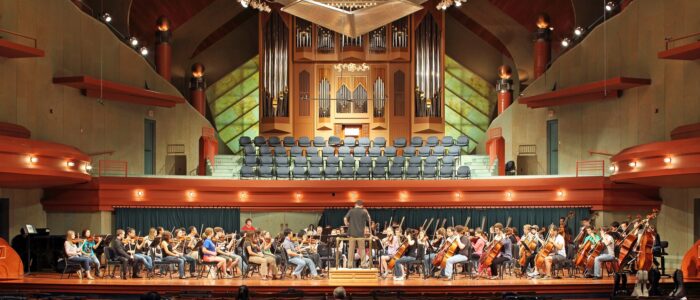

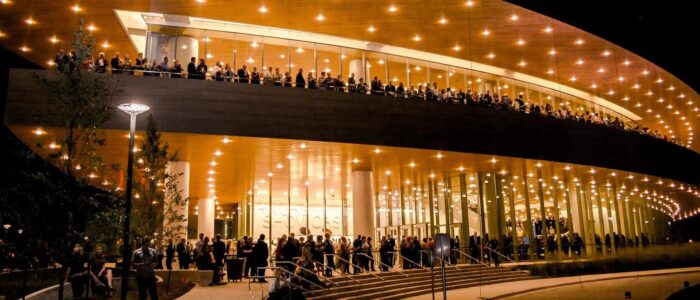

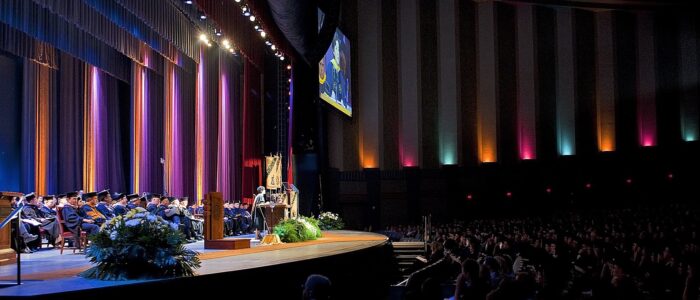
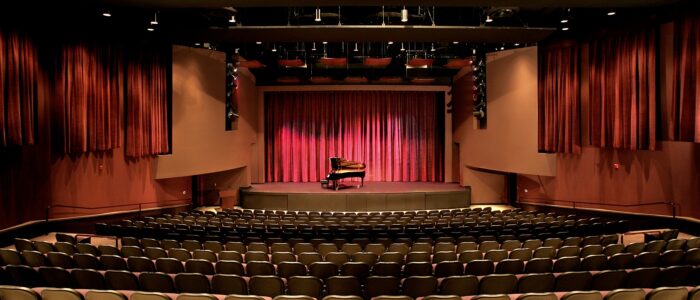
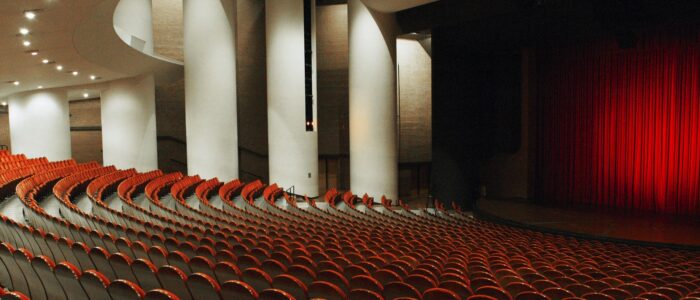
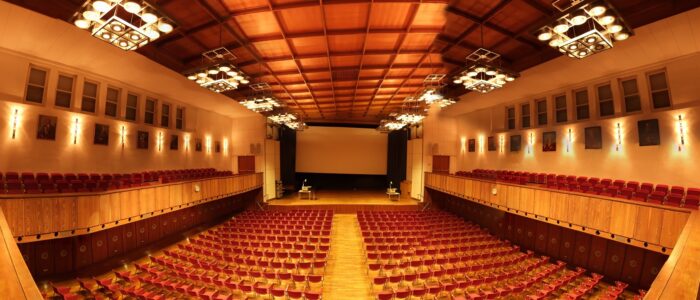
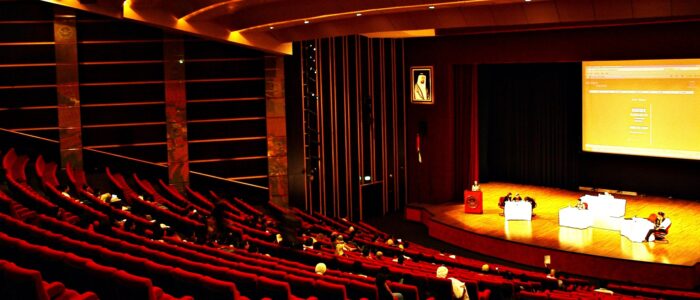
The Entertainment Services and Technology Association is one of the first names in trade associations that support the ‘business of show business’ through networking, safe practices, education, and representation. We follow the standards making activity of its technical committees and monitor public commenting opportunities. ESTA releases markups of its consensus products for public comment at a fairly brisk pace on its standards development landing page:
Transcripts of related standards:
2026 National Electrical Code Public Input Report CMP-15
2026 National Electrical Code Second Draft Report CMP-15
You may obtain an electronic copy at the link above, along with a comment form. Send your comments to Karl Ruling, (212) 244-1505, standards@esta.org with an optional copy to psa@ansi.org). We encourage our colleagues in school districts and in colleges and universities large and small; with responsibilities for the safety and sustainability of cultural resource properties, media centers, performance venues to participate in the ESTA technical standards development program.
We keep the ESTA suite on the standing agenda of our Lively Arts colloquia; open to everyone. See our CALENDAR for the next online meeting.
Since the electrotechnologies for the lively arts have evolved into complex, interoperable systems we also collaborate with the IEEE Education & Healthcare Facilities Committee on technical specifics. That committee meets online four times per month in European and American time zones.
“We’re all actors: We all play different roles in different situations.”
Marlon Brando
Issue: [Various]
Category: Electrical, Infotech, Lively Arts,
Colleagues: Mike Anthony, Christine Fischer, Mike Hiler, Nehad El-Sherif
*More >>
State Capitals And College Towns: A Recipe For Success
Baby Boomers Are Retiring to College Towns
The original University of Michigan codes and standards advocacy enterprise interviewed an ESTA affiliate in 2015:
2025 GROUP B PROPOSED CHANGES TO THE I-CODES | Complete Monograph 2630 Pages
N.B.
G73-25 Section 410: Stages, Platforms and Technical Production Areas (Page 591-…) Submitted by the American Society of Theater Consultants
G77-25: Emergency ventilation (Pages 601-…)
G27-25: Type A and B stage definition (Page 490)
G78-25: Technical Production areas (Page 602)
American Society of Theater Consultants | Oberlin College
2024 GROUP A PROPOSED CHANGES TO THE I-CODES | Complete Monograph 2658 Pages
2024/2025/2026 ICC CODE DEVELOPMENT SCHEDULE

“View from the Ancient Theater in Taormina to Mount Etna” c. 1880 Carl Wuttke
Safety and sustainability for any facility begins with an understanding of who shall occupy it. University settings, with mixed-use phenomenon arising spontaneously and temporarily, present challenges and no less so in square-footage identified as performing arts facilities. Education communities present the largest installed base of mixed use and performing arts facilities. A distinction is made between supervised occupants that are in secondary schools (generally under age 18) and unsupervised occupants that are in university facilities (generally above age 18).
First principles regarding occupancy classifications for performing arts facilities appear in Section 303 of the International Building Code Assembly Group A-1. The public edition of the 2021 IBC is linked below:
2024 IBC Chapter 3: Occupancy Classification and Use
Each of the International Code Council code development groups A, B and C; fetch back to these classifications. You can sample the safety concepts in play with an examination of the document linked below:
2019 GROUP B PROPOSED CHANGES TO THE GROUP B I-CODES
2019 GROUP B PUBLIC COMMENT AGENDA
Each of the foregoing documents are lengthy so we recommend using search terms such as “school”, “college”, ‘”university”, “auditorium”, “theater”, “children”, “student” to hasten your cut through it.
We find continuation of lowering of the lighting power densities as noteworthy. Technical committees assembled and managed by the International Code Council, the American Society of Heating & Refrigeration Engineers and the Illumination Engineering Society are leaders in developing consensus products that drive the LED illumination transformation.
The revision schedule for the next tranche of ICC titles that are built upon the foundation of the IBC is linked below:
2024/2025/2026 ICC CODE DEVELOPMENT SCHEDULE
We encourage experts in education communities — facility managers, research and teaching staff, architectural and engineering students — to participate directly in the ICC Code Development process at the link below:
https://www.iccsafe.org/cdpaccess/


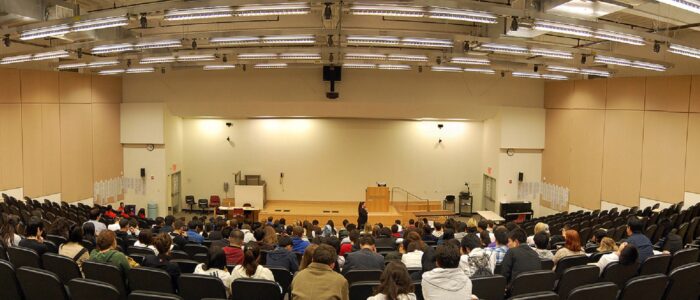



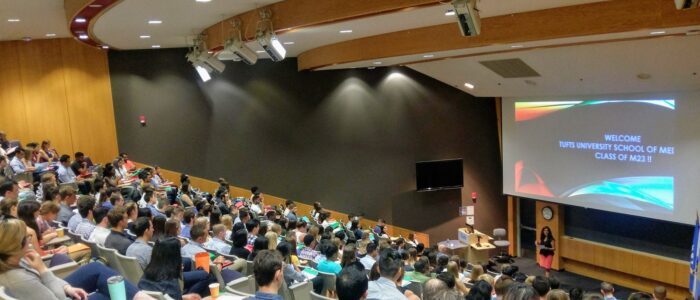
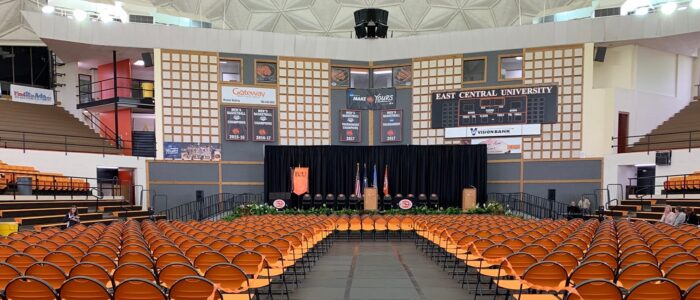
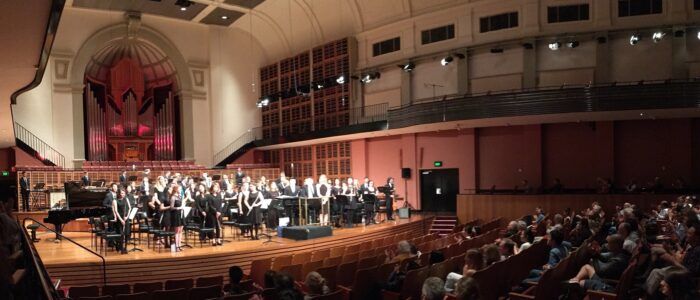
We reserve a place on the agenda of our standing Lively 200 colloquia on this topic. See our CALENDAR for the next online meeting; open to everyone.
Issue: [18-166]
Category: Architectural, Healthcare Facilities, Facility Asset Management
Colleagues: Mike Anthony, Jim Harvey, Richard Robben
The International Code Council (ICC) develops its codes and standards through a consensus-driven process. The ICC Code Development Process follows these major stages:
Code Change Proposal Submission
Stakeholders (e.g., government officials, industry professionals, and the public) submit proposals to modify existing codes or introduce new provisions.
Committee Action Hearing (CAH)
Expert committees review and evaluate submitted proposals.
Public testimony is allowed, and committees vote on whether to approve, disapprove, or modify the proposals.
Public Comment Period
After the CAH, the public can submit comments or suggest modifications to the committee’s decisions.
These comments help refine the proposed changes before final voting.
Public Comment Hearing (PCH)
ICC members discuss and vote on public comments.
This step ensures that all voices are heard and debated before finalizing changes.
Online Governmental Consensus Vote (OGCV)
Governmental members vote on the final code changes electronically.
Only governmental voting members (e.g., code officials) participate in this stage to ensure the process remains unbiased.
Publication of New Code Edition
Approved code changes are incorporated into the next edition of the ICC codes.
The ICC updates its codes every three years (e.g., 2021, 2024, 2027 editions).
This structured process ensures that ICC codes remain comprehensive, up-to-date, and responsive to industry needs while maintaining safety and functionality.
[0.00] ‘Various people have argued that we live in a post-truth society and and point to obviously quite um vivid examples like President Trump as as illustrating this. But you know there is no such thing actually as post-truth thinking. Truth is fundamental to to the idea of thought; that’s what thinking is — the the attempt to get the true answer to something. So if you if you discard truth, there is nothing left except the pursuit of power, which means shouting as far high as in as high as tone as you can. And and I think this is one thing that university students have to confront in the humanities. This idea that truth is somehow how marginal or negotiable that there isn’t an absolute standard but it’s simply what you can something that you use to embellish your arguments as though you put flowers around their necks. [1:17]
The first elevator in the United States was installed at Harvard University in 1874. It was not a passenger elevator as we typically think of today, but rather a freight elevator used to move heavy items within a building. The installation of this elevator marked an important development in building technology and transportation within multi-story structures. It was based on the design of Elisha Otis, who is famous for inventing the safety elevator with a safety brake system that prevents the elevator from falling if the hoisting cable fails. Otis’ innovation played a pivotal role in making elevators safe and practical for everyday use, leading to their widespread adoption in buildings around the world.
Education communities are stewards of 100’s of lifts, elevators and moving walks. At the University of Michigan, there are the better part of 1000 of them; with 19 of them in Michigan Stadium alone. The cost of building them — on the order of $50,000 to $150,000 per floor depending upon architectural styling — and the highly trained staff needed to operate, maintain and program interoperability software is another cost that requires attention. All building design and construction disciplines — architectural, mechanical and electrical have a hand in making this technology safe and sustainabile.
We start with international and nationally developed best practice literature and work our way to state level adaptations. Labor for this technology is heavily regulated.
Its a rarefied and crazy domain for the user-interest. Expertise is passionate about safety and idiosyncratic but needs to be given the life safety hazard. Today we review o pull together public consultation notices on relevant codes, standards and regulations today 11 AM/EDT.
More
NFPA 70 Article 620 Elevators, etc.
NEC Article 620 | David Herres
International Building Code Chapter 30: Elevators and Conveying Systems
Inside Higher Ed: Tragedy in an Elevator
University of Michigan Elevator Recall Control Wiring Schematic
University of Michigan Elevator Shaft Lighting Schematic
The first recorded public use of an elevator was in 1743, in a private residence in France. It was created by a French scientist and inventor named Louis-François Dauprat. However, this early elevator was not used for public transportation or in a commercial building.
The first practical passenger elevator was invented by Elisha Graves Otis, an American industrialist and inventor, in 1852. The Otis elevator used a safety device known as a “safety brake” or “safety hoist,” which prevented the elevator from falling in case the hoisting cable broke at a five-story building in New York City in 1857, known as Haughwout Building.
This invention revolutionized vertical transportation, allowing for the construction of taller buildings and changing the way people live and work in urban areas.
The earliest installation of a passenger elevator in a university building in the United States was at the Massachusetts Institute of Technology. In 1861, Otis Brothers & Co., the company founded by Elisha Graves Otis, installed the first passenger elevator on a university campus in the Rogers Building at MIT. The Rogers Building was a three-story structure that housed laboratories, classrooms, and offices for faculty and students. The installation of the passenger elevator provided vertical transportation within the building, making it more convenient for people to move between floors.
This early installation marked an important milestone in the history of vertical transportation on college and university campuses, and it paved the way for the adoption of elevators in other educational institutions as they expanded in size and height over time.
New update alert! The 2022 update to the Trademark Assignment Dataset is now available online. Find 1.29 million trademark assignments, involving 2.28 million unique trademark properties issued by the USPTO between March 1952 and January 2023: https://t.co/njrDAbSpwB pic.twitter.com/GkAXrHoQ9T
— USPTO (@uspto) July 13, 2023
Standards Michigan Group, LLC
2723 South State Street | Suite 150
Ann Arbor, MI 48104 USA
888-746-3670
